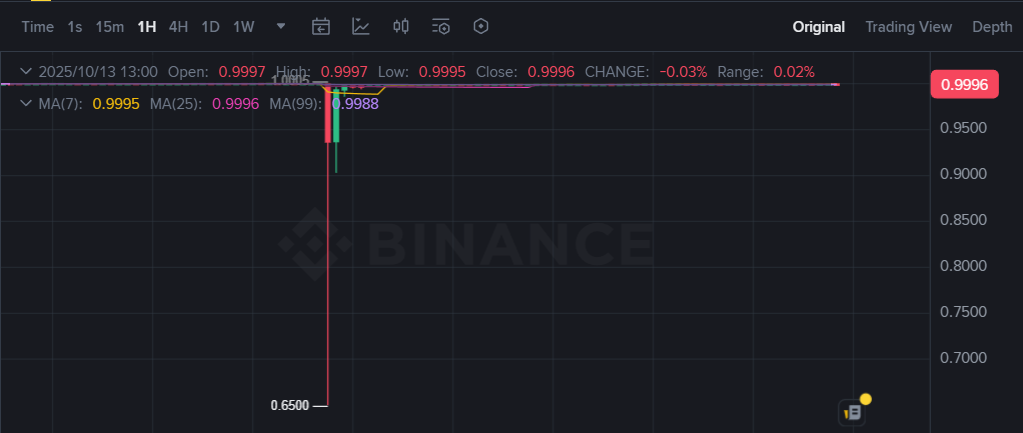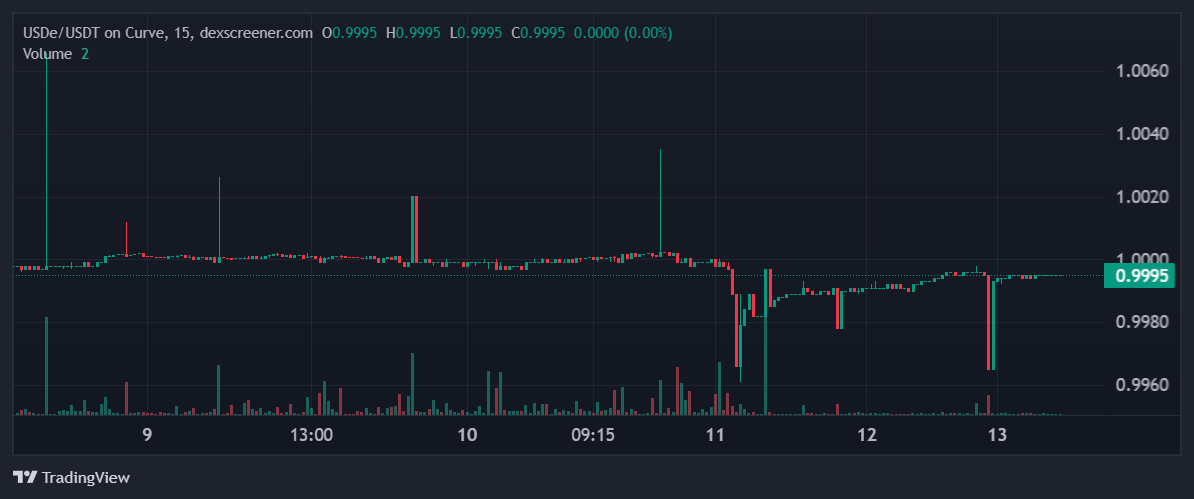On Friday, October 10, the crypto market once again showed how quickly it can take a sharp turn, with crypto exchanges reporting that approximately $20 billion in leveraged positions had been liquidated in just a few hours – the largest single-day liquidation event the industry has seen to date.
In the ensuing market chaos, decentralized finance (DeFi) protocols underwent a major stress test and emerged largely unscathed – with most of the largest protocols experiencing no outages and very few user-reported issues, especially compared to their centralized counterparts.
On Friday evening, following reports that US President Donald Trump had imposed 100% tariffs on imports from China, Bitcoin fell more than 10% from above $120,000, briefly falling below $103,000 on some exchanges before recovering, while many altcoins plunged further on short squeezes and most assets suffered double-digit losses.
Ethereum (ETH) crashed below $4,000, and XRP reached its lowest price since November last year. The total market capitalization fell by more than 15% in a matter of hours, from over $4.2 trillion to around $3.5 trillion.
The markets have since recovered much of their losses, with the total market cap rising back to $3.97 trillion at the time of writing, BTC back above $114,000 and ETH around $4,100. But traders and other industry participants – especially those who trade with leverage, more than 1.6 million of whom were liquidated on Friday – continue to analyze and debate what happened, how the top platforms performed and what comes next for the markets.

Total number of crypto liquidations as of October 10. Source: Coinglass
What happened to Binance and Ethena’s USDe?
During the market crash and its aftermath, much of the drama centered around the largest centralized exchange (CEX), Binance, as well as USDe, Ethena’s US dollar-linked token, which saw an overwhelming drop on the exchange to a low of $0.6567.

USDe price on Binance. Source: Binance
But on other platforms, especially Curve Finance pools, USDe remained close to the $1.00 price peg, a discrepancy that led some to believe the drop was caused by Binance’s own technical setup. Critics reported that price feeds lagged and market makers went offline. This could cause the CEX order book to become out of sync with the broader market.

USDe/USDT pair on Curve. Source: DEX Screener
However, in a blog post on Saturday, October 12, Binance distanced itself from these allegations and instead said that the exchange’s main futures, spot matching engines and API trading “remained operational.”
The exchange also added that the forced liquidation volume processed by the platform had a “relatively low share of total trading volume, indicating that this volatility was mainly driven by general market conditions.”
Binance also said it compensated users who were liquidated as a result of the decoupling of USDe and two other assets on the exchange – as they held these assets as collateral for their leveraged trades and loans – paying out a total of $283 million to users, although The Defiant was unable to independently verify these figures.
However, many were still not convinced, pointing out inconsistencies in the blog post, unclear timelines, vague technical explanations and missing data on liquidations and compensations.
How did DeFi fare in the chaos?
Meanwhile, DeFi protocols faced their own pressure tests as liquidity thinned and collateral values fluctuated wildly. Aave, the largest credit protocol with more than $42 billion in total value (TVL) per DefiLlama, has undergone “the biggest stress test” of its credit infrastructure, Aave founder Stani Kulechov wrote in an X-post on the evening of October 10.
“The protocol worked flawlessly and automatically liquidated a record $180 million in collateral in just one hour, without any human intervention,” Kulechov added.
Hyperliquid, the largest decentralized perpetuals exchange by trading volumes, also weathered the volatility with “100% uptime with no bad debt,” according to founder and CEO Jeff Yan, who said in an the more than two years it has been active.
After explaining Hyperliquid’s activities in the first twenty minutes of the crash, when billions of dollars in leveraged positions on the DEX were liquidated, Yan argued: “In other locations, the liquidation engine is not transparent and therefore may not be subject to the same strict margin requirements as for normal users.”
However, hyperliquid rival Lighter, which surpassed its rival in daily volumes last week, ran into trouble during the crash. The team behind DEX reported that the database was experiencing heavy traffic and experienced a 4.5-hour outage on Friday evening.
Following the market chaos, the team acknowledged in an
The team also shared user loss figures and promised compensation, reporting that 2,008 merchants lost more than $1,000, while 367 lost more than $10,000, and 38 lost more than $100,000.
Morpho, another major lending protocol with over $7 billion in TVL, reported no major issues, with co-founder Merlin Egalite in an Oct. 11 X-post calling the event “one of the biggest tests DeFi has seen in recent history” and stating that the protocol “continues to work as designed.” However, some users reported having trouble accessing their orders due to what Egalite described as a “wallet RPC” issue.
In commentary on The Defiant, Sam MacPherson, core contributor behind Spark, a DeFi protocol in the Sky ecosystem with over $9.6 billion in TVL, revealed in commentary on The Defiant that Spark’s protocols, including DeFi’s third-largest lending protocol, SparkLend, were functioning normally during the market crash.
MacPherson said deposits into Sky’s USDS stablecoin “remain at $8 billion in total, with $3.2 billion of stablecoins available for immediate redemption.”
The Spark core contributor also noted that “balance sheet exposure is as banal as it gets, with the majority of outstanding loans against BTC, ETH, and LSTs,” adding that “these types of events, because they have been in the industry for so long, are routine over a multi-year period.”
Questions remain
People are still debating who or what is really responsible for the crash and the resulting massive wave of liquidations, as rumors and reports continue to circulate on X and other social platforms.
Some public figures are pointing fingers at the largest centralized exchanges, saying they may be downplaying the numbers, which could mean the actual scale of the liquidations was much greater than what was publicly disclosed and reported on platforms like Coinglass.

Total DeFi TVL. Source: DefiLlama
Meanwhile, liquidity within DeFi took a major hit, falling by about 11%, or $20 billion, from Friday to Saturday.
Shawn Young, chief analyst at MEXC Research, told The Defiant that the sharp taper “removed a substantial layer of speculative exposure, effectively cleansing the system and setting the tone for a more sustainable upward move.”


